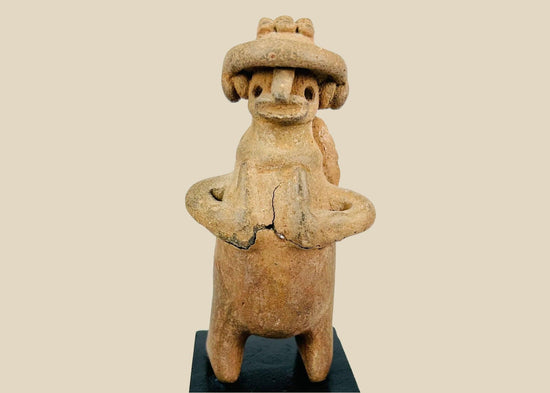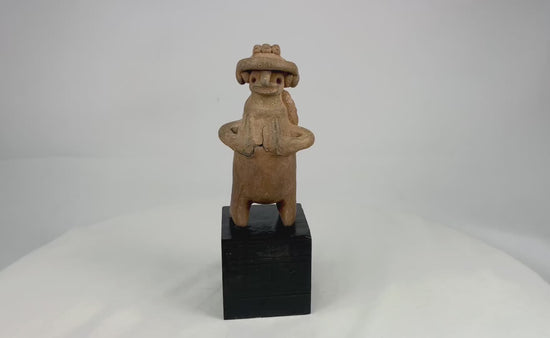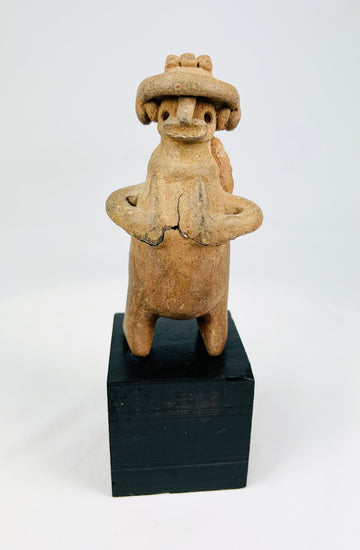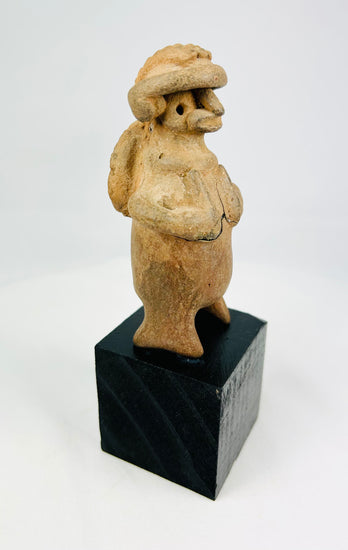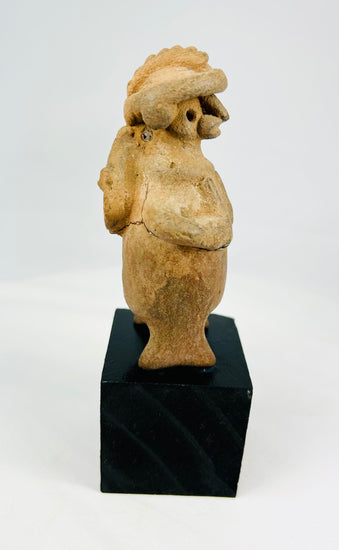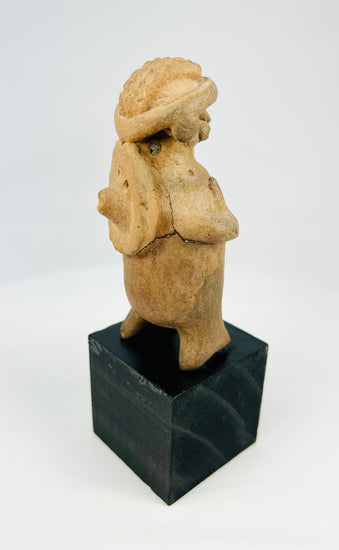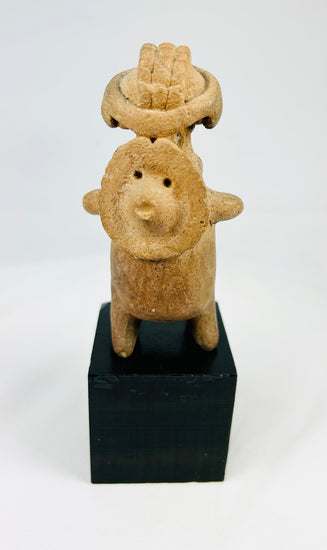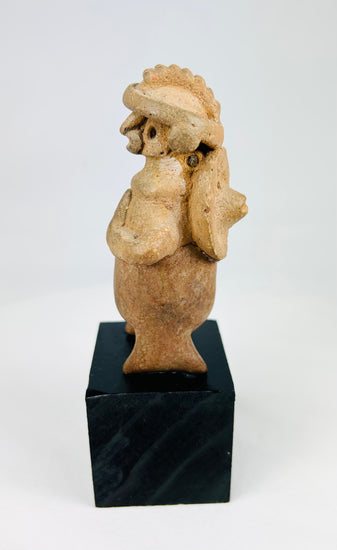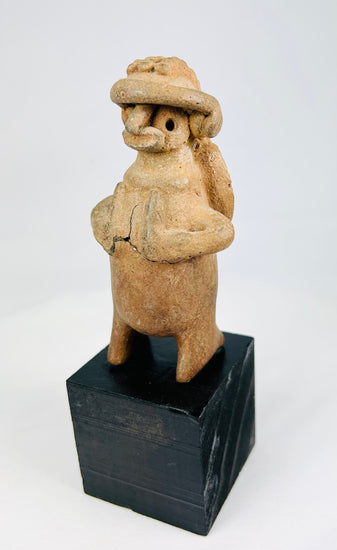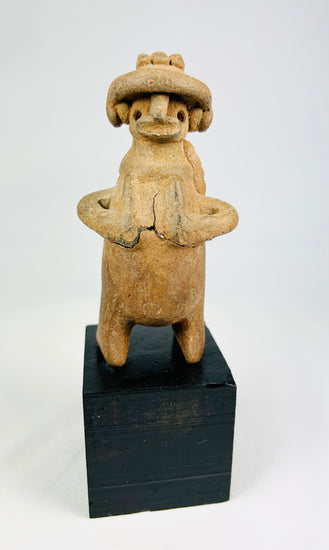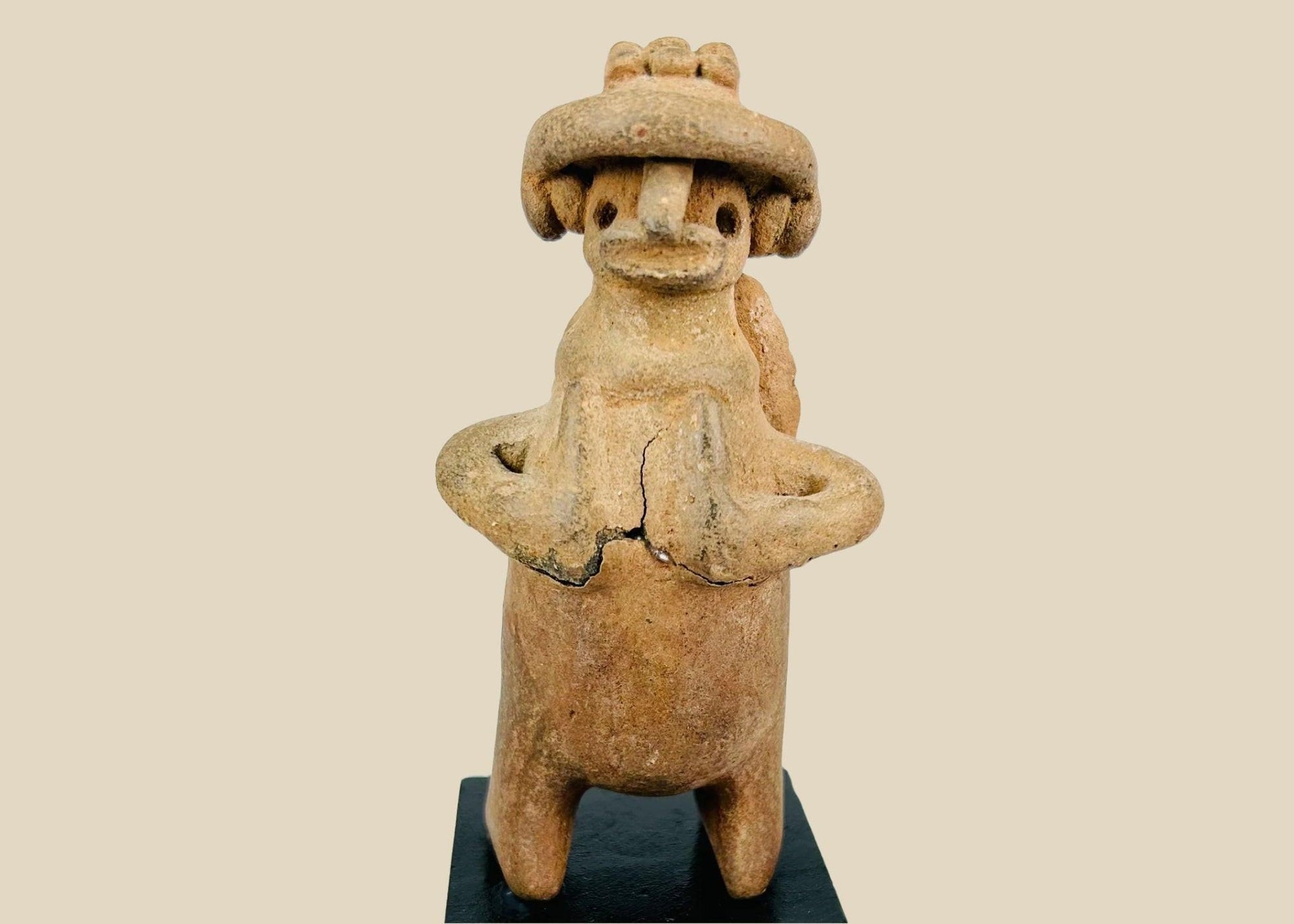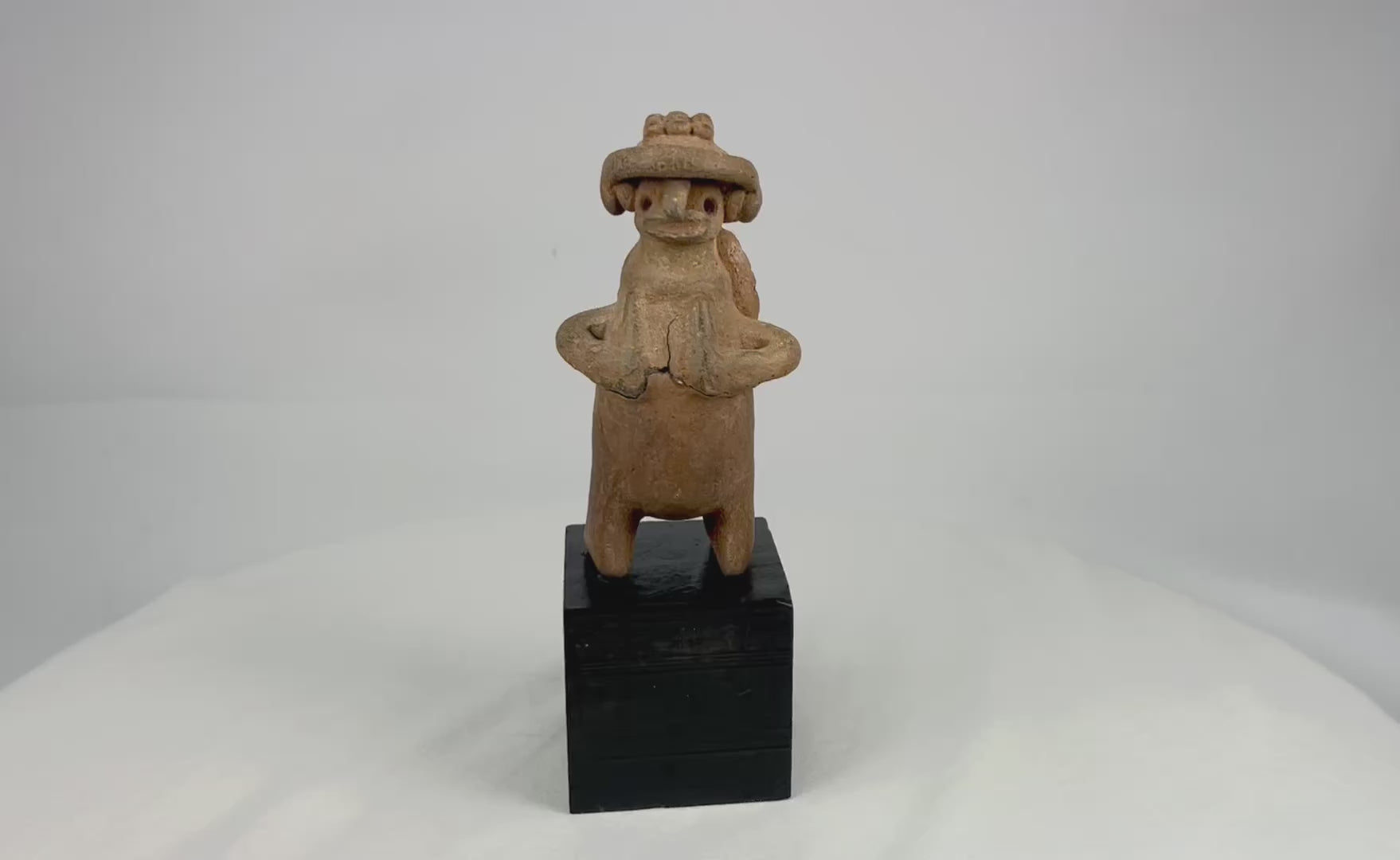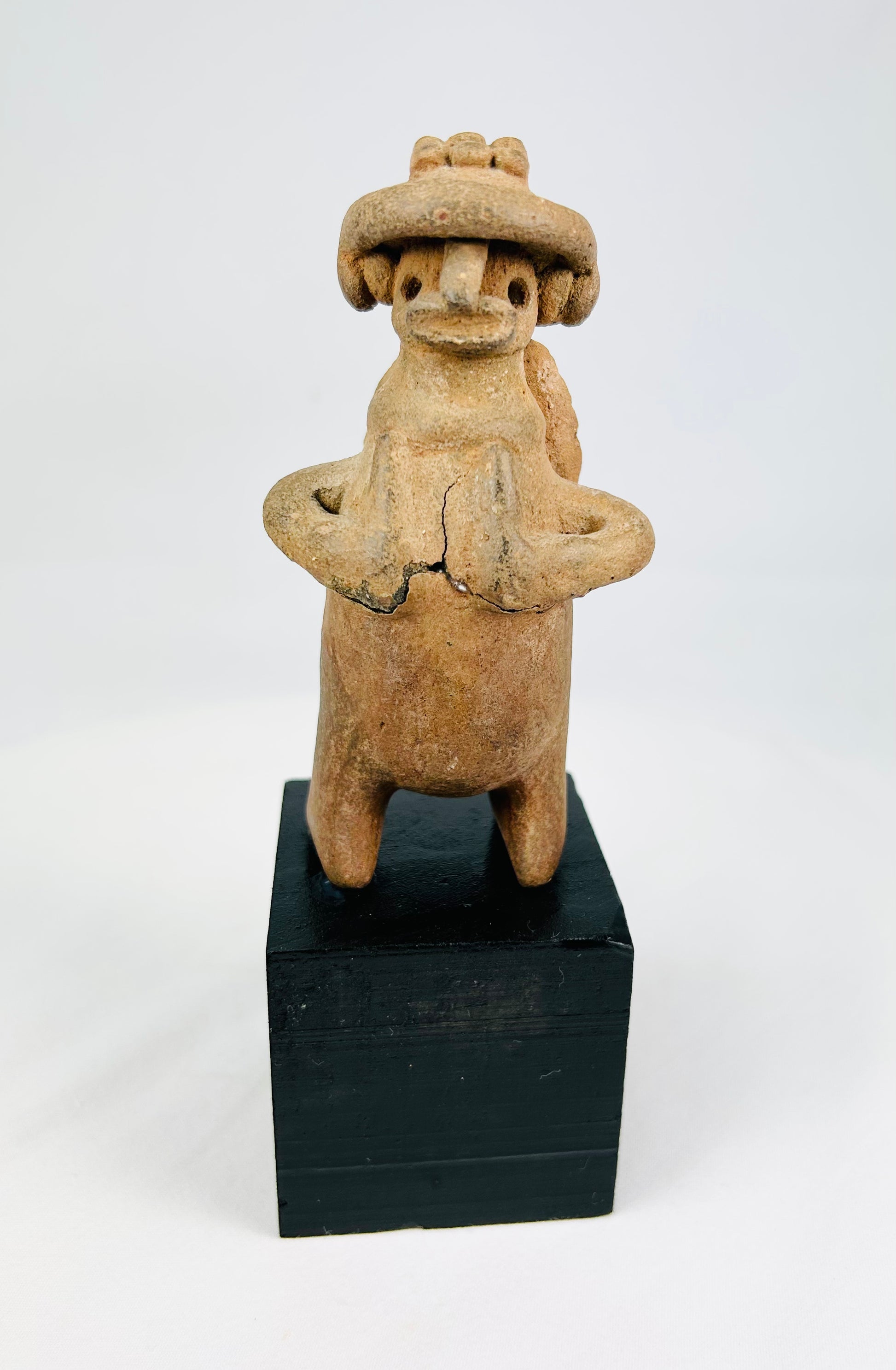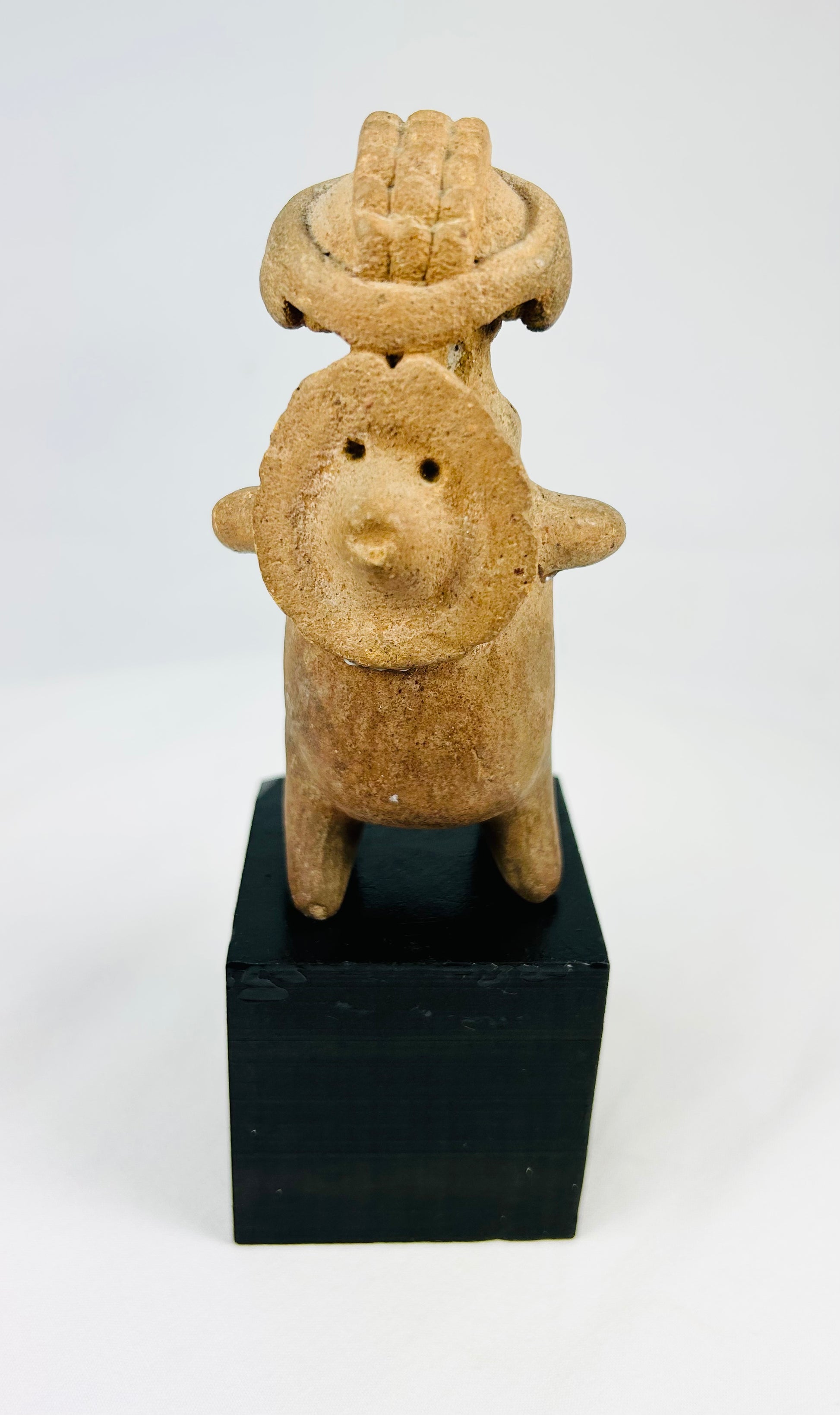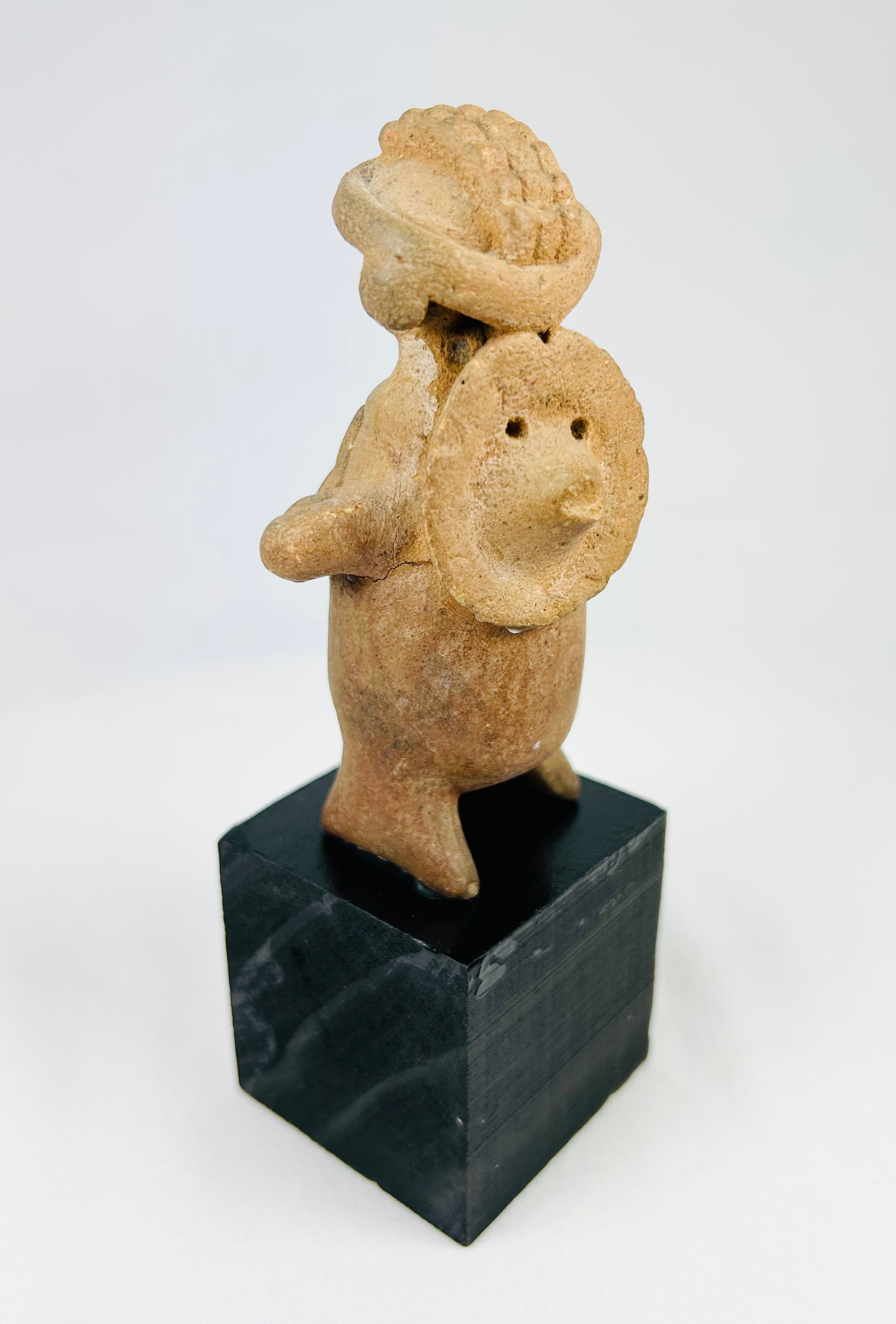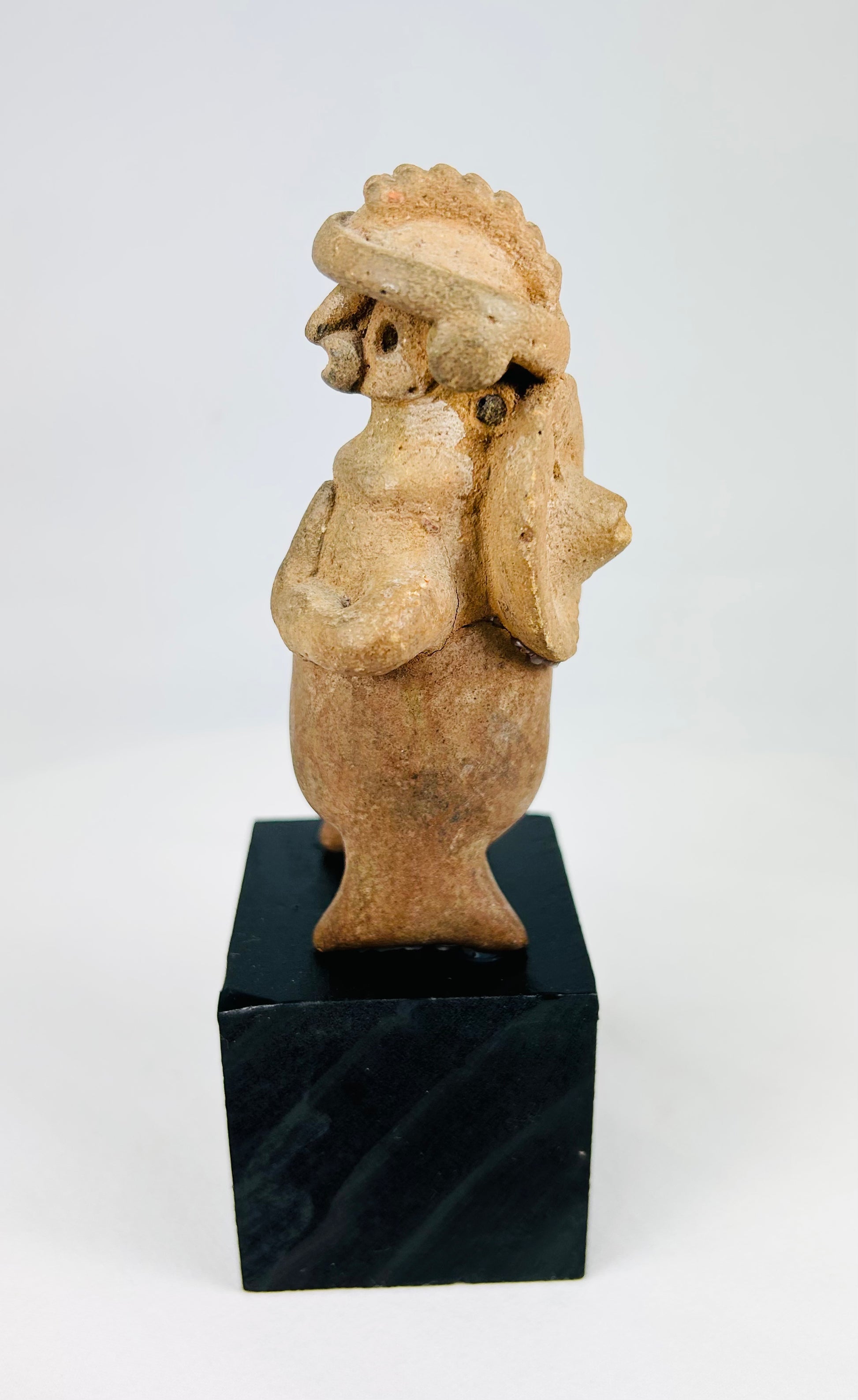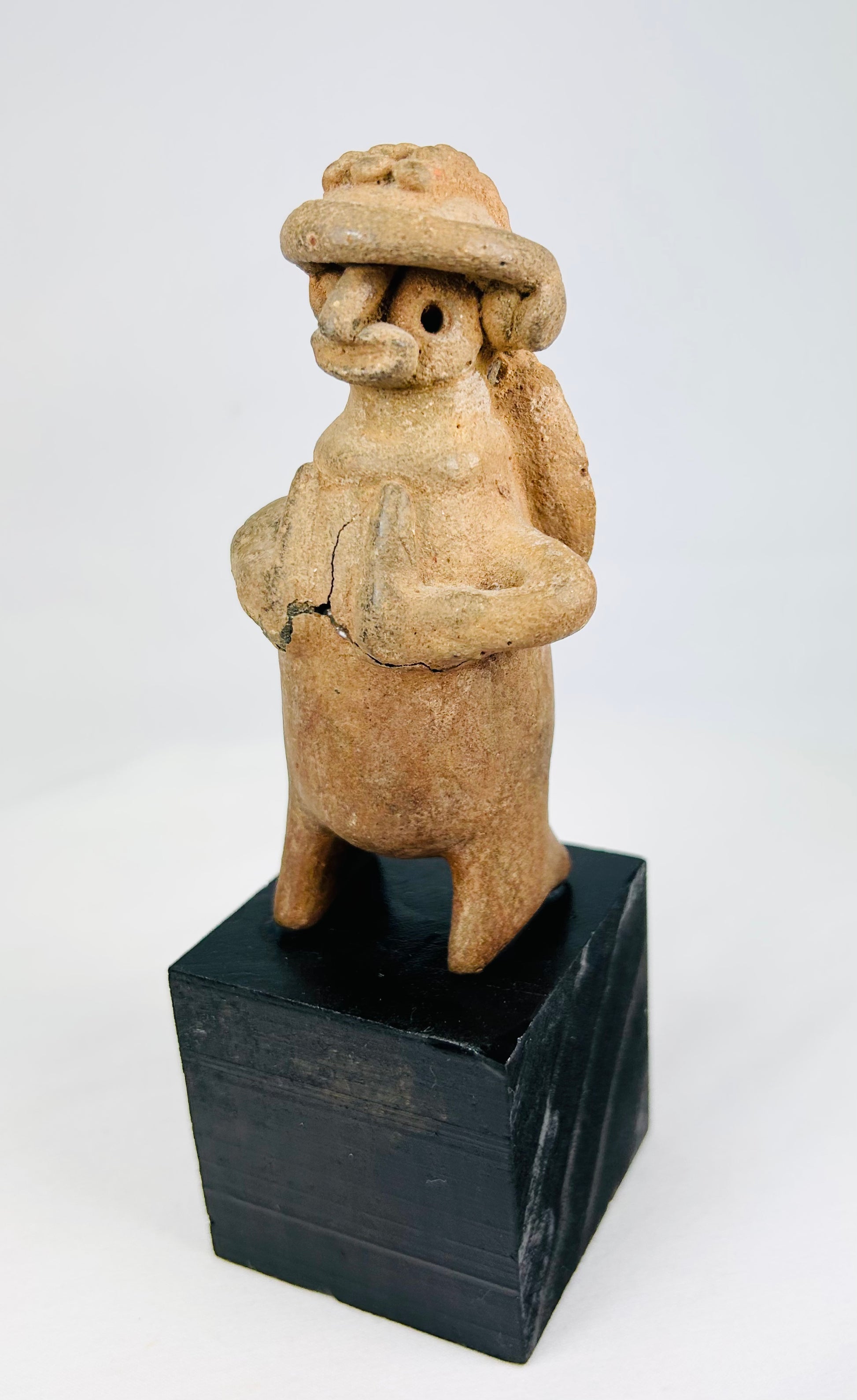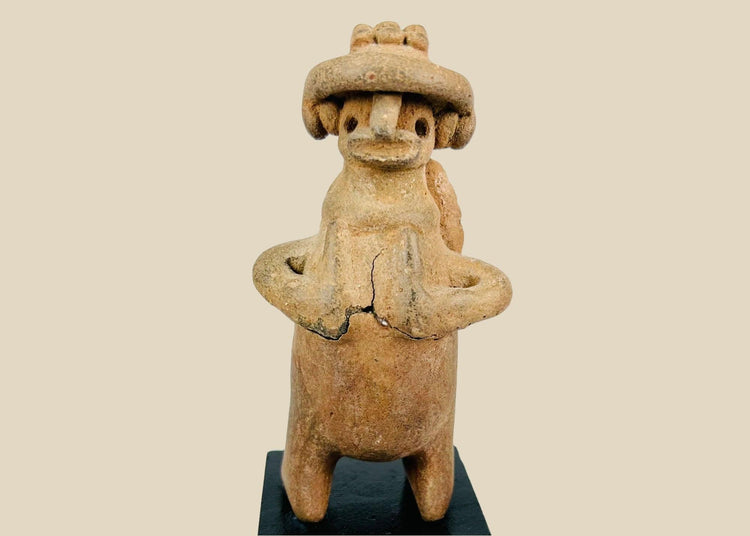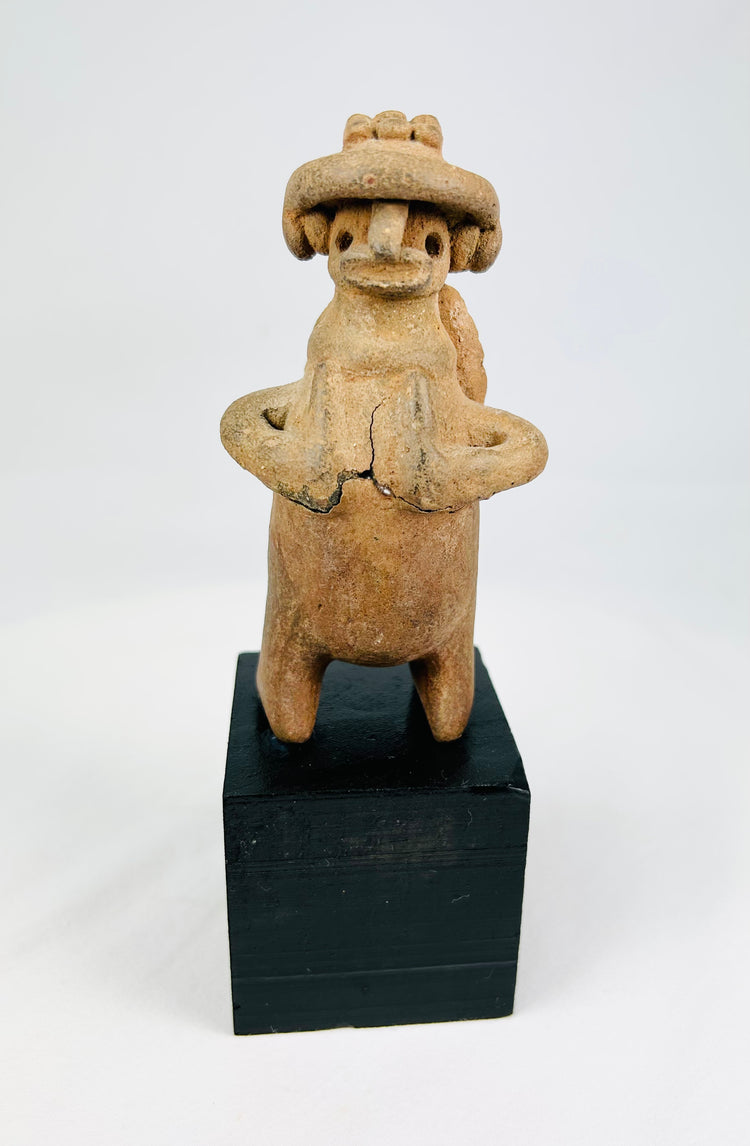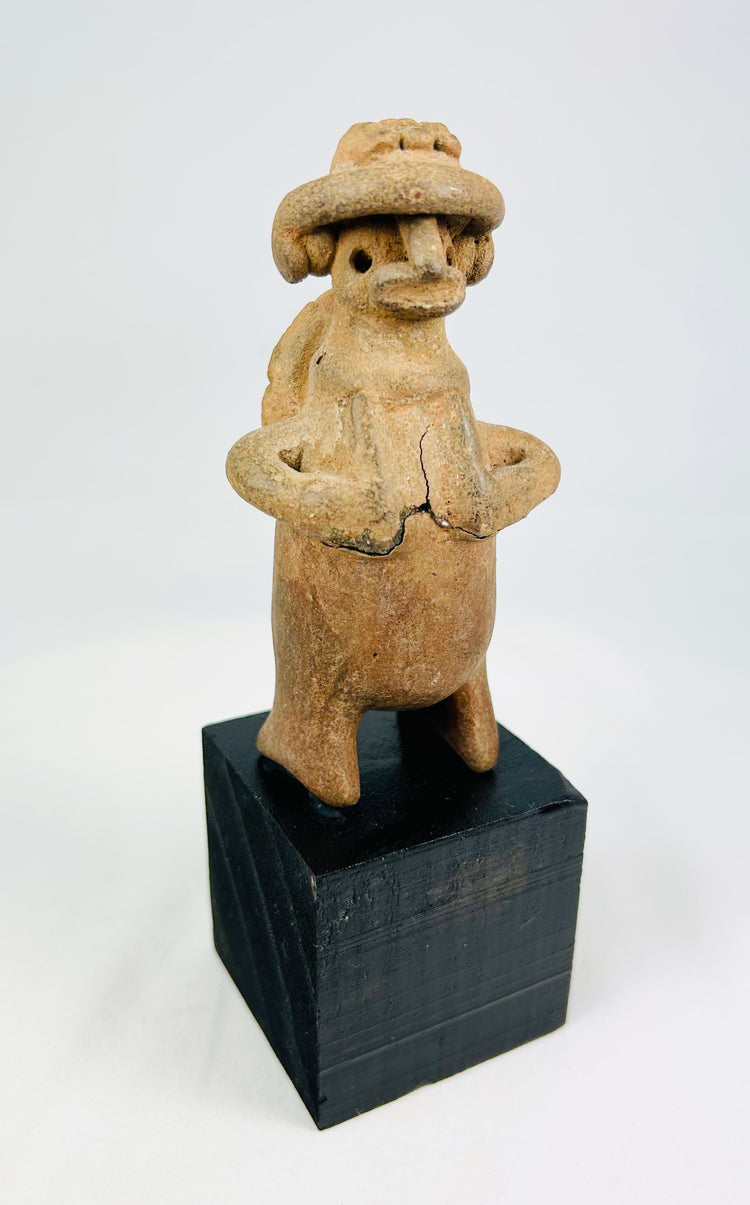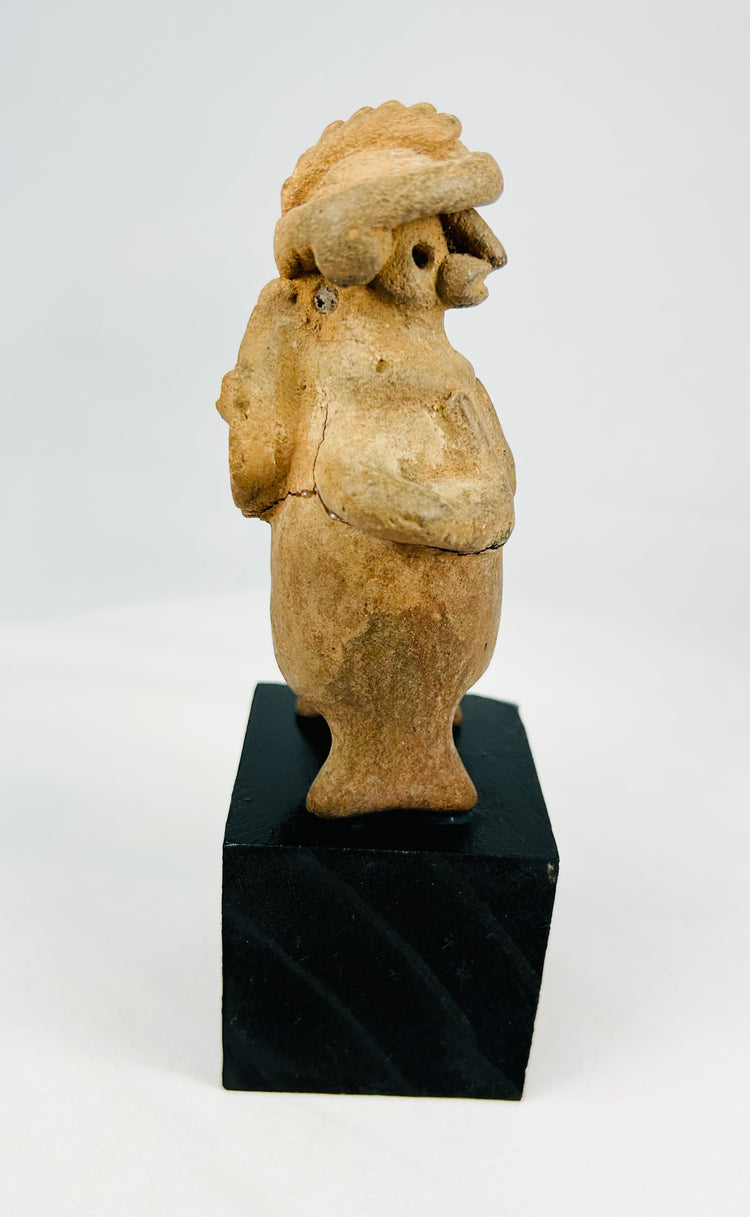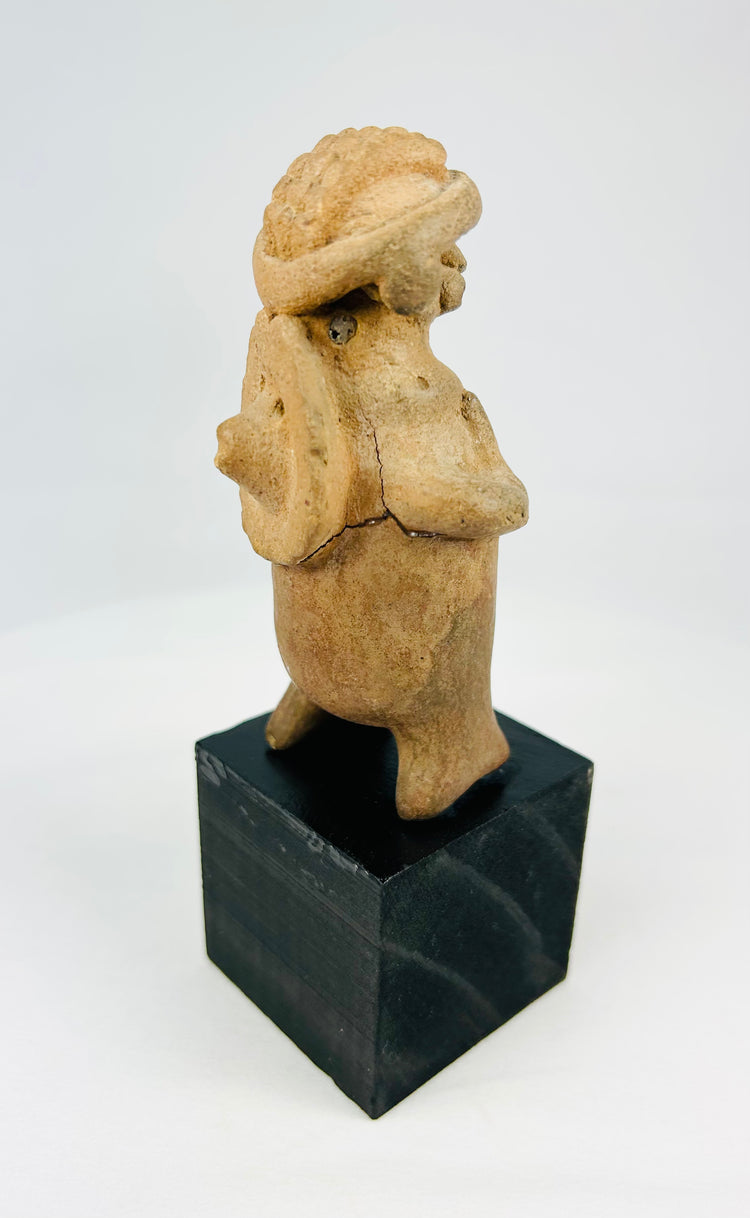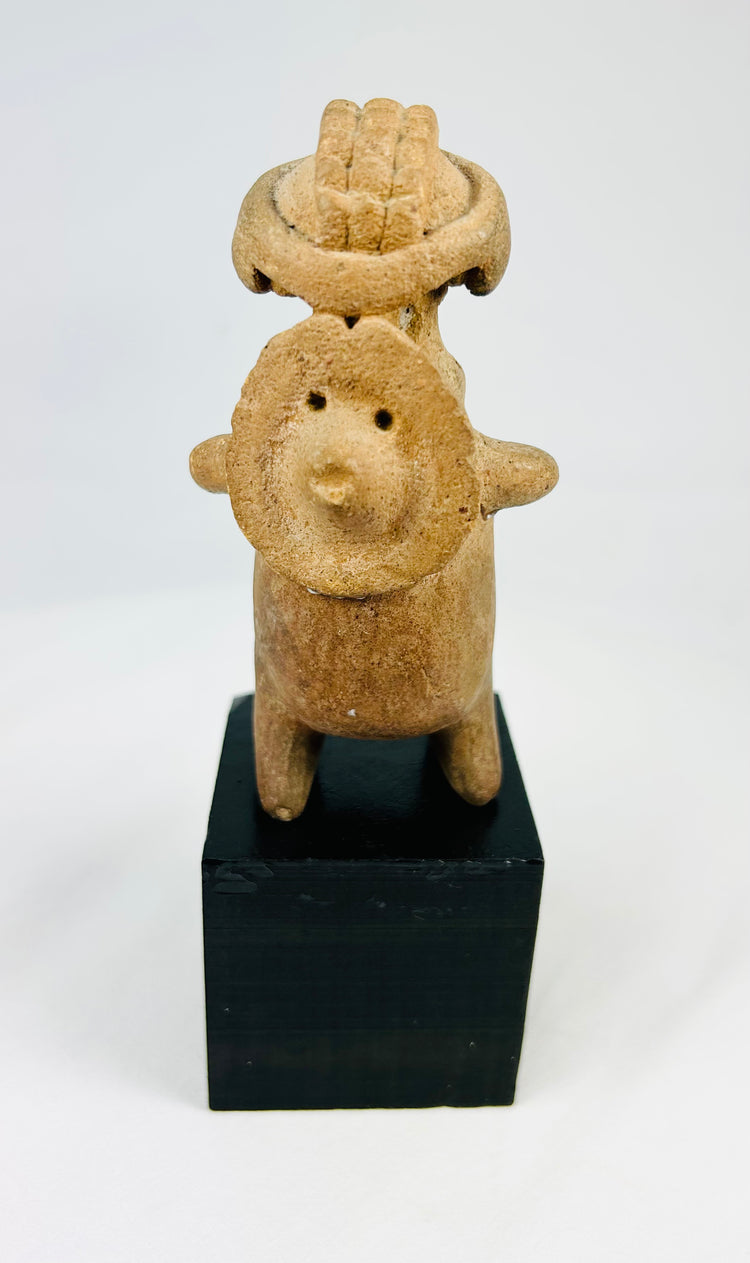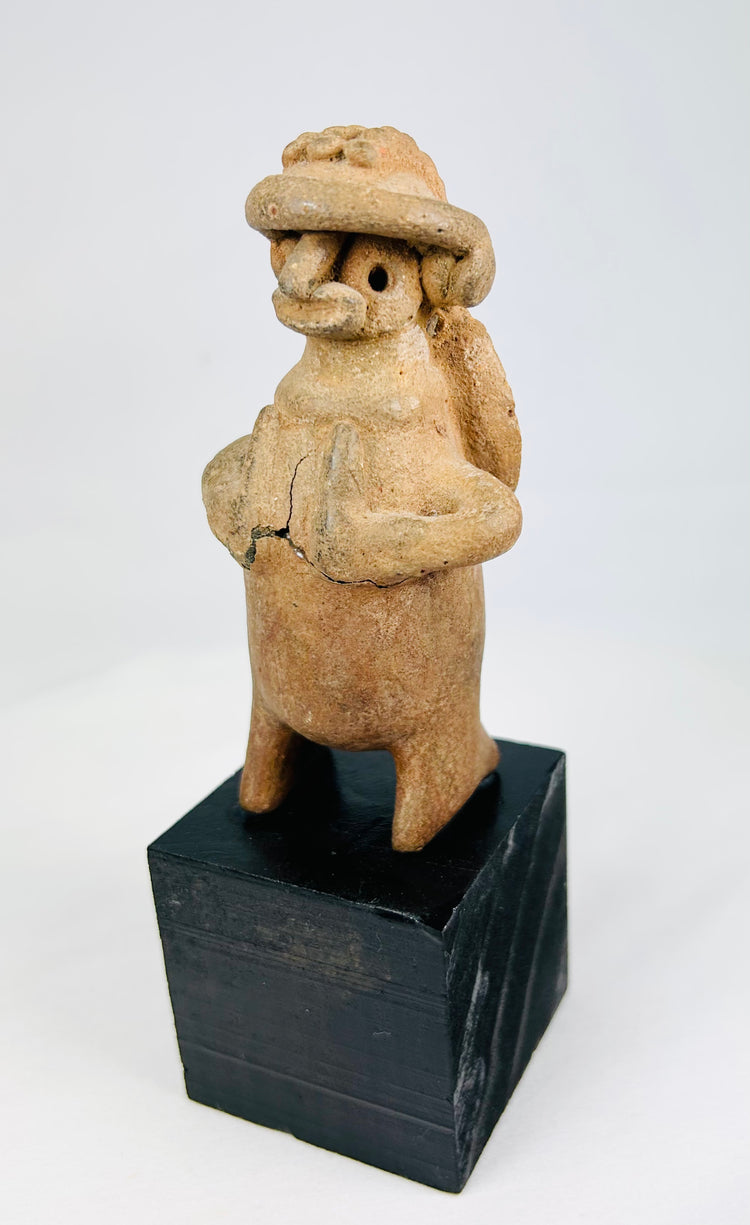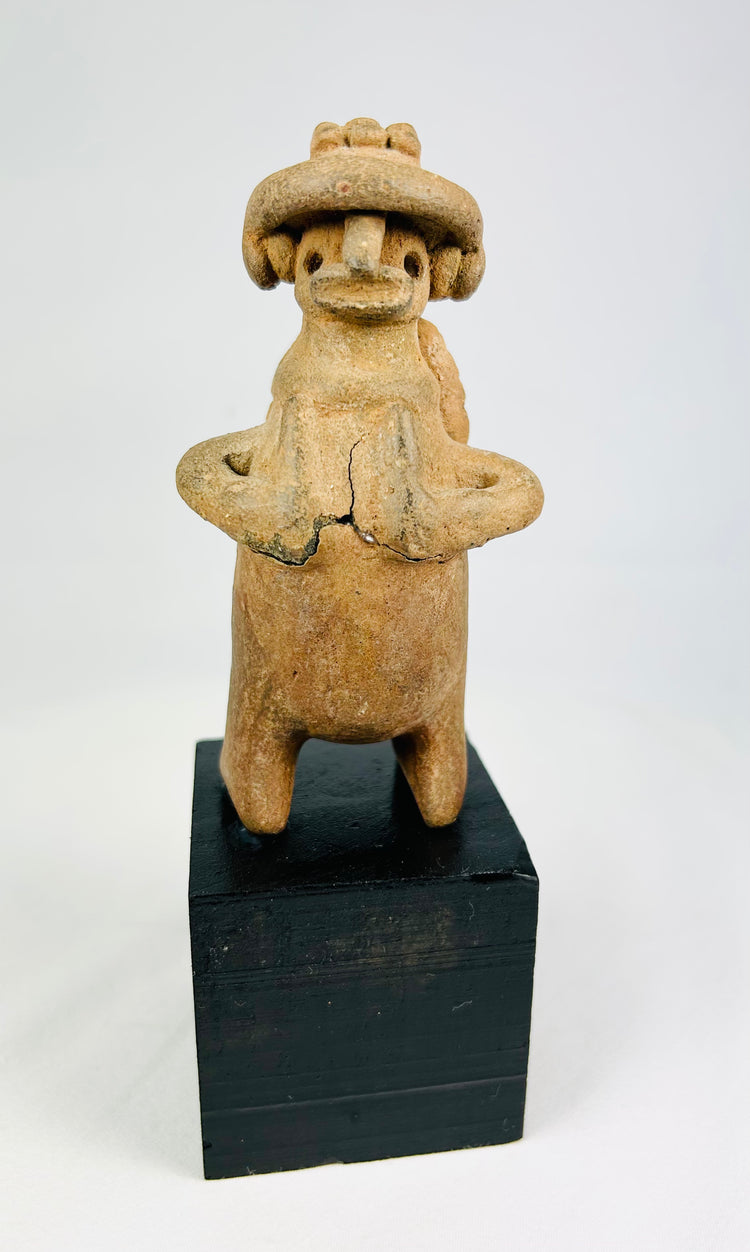West Mexican Terracotta Effigy With Ring Headdress And Back Disk | Shaft-Tomb Tradition | 100 BCE–300 CE
Description
More
Less
Historical Context & Origin
Region: West Mexico, likely Jalisco/Nayarit (Shaft-Tomb tradition)
Material: Hand-modeled terracotta with earthen deposits; traces of slip; mounted on a modern wood display block
Period: Late Formative to Early Classic, ca. 100 BCE–300 CE
Description
Compact standing effigy with rounded body, short bifurcated legs, and looped arms drawn to the chest in a gesture of reverence. The figure wears a broad, turban-like headdress with a ridged crest and large earspools framing a stylized face with prominent nose and muzzle-like lips. Strapped to the back is a circular disk with two perforations and a central boss—interpreted as a warrior’s back mirror or shield, an attribute often associated with status, ritual performance, or protective power in West Mexican imagery.
Features
- Broad ring headdress with crest and earspools
- Hands-to-chest pose (ritual/ancestral veneration)
- Circular back disk (mirror/shield) with suspension holes
- Warm buff surface with mineral accretions and ancient wear
Cultural Significance
Figures of this type were placed in shaft-tomb burials across West Mexico as companions for the deceased, embodying lineage ancestors, attendants, or warriors. The back mirror/shield is a notable emblem connected to ritual identity and elite display in Mesoamerica.
Condition
Good archaeological condition with expected age wear. Stable age fissures across the torso and waist; small nicks to the headdress rim and extremities; old crack repair halfway through the figure, surface deposits and root marks consistent with burial. No distracting losses. Presented on a modern custom base.
Dimensions (approximate)
Height: 16.5 in
Width: 2 in
Depth: 2 in
Age
Circa 100 BCE–300 CE
Description
Historical Context & Origin
Region: West Mexico, likely Jalisco/Nayarit (Shaft-Tomb tradition)
Material: Hand-modeled terracotta with earthen deposits; traces of slip; mounted on a modern wood display block
Period: Late Formative to Early Classic, ca. 100 BCE–300 CE
Description
Compact standing effigy with rounded body, short bifurcated legs, and looped arms drawn to the chest in a gesture of reverence. The figure wears a broad, turban-like headdress with a ridged crest and large earspools framing a stylized face with prominent nose and muzzle-like lips. Strapped to the back is a circular disk with two perforations and a central boss—interpreted as a warrior’s back mirror or shield, an attribute often associated with status, ritual performance, or protective power in West Mexican imagery.
Features
- Broad ring headdress with crest and earspools
- Hands-to-chest pose (ritual/ancestral veneration)
- Circular back disk (mirror/shield) with suspension holes
- Warm buff surface with mineral accretions and ancient wear
Cultural Significance
Figures of this type were placed in shaft-tomb burials across West Mexico as companions for the deceased, embodying lineage ancestors, attendants, or warriors. The back mirror/shield is a notable emblem connected to ritual identity and elite display in Mesoamerica.
Condition
Good archaeological condition with expected age wear. Stable age fissures across the torso and waist; small nicks to the headdress rim and extremities; old crack repair halfway through the figure, surface deposits and root marks consistent with burial. No distracting losses. Presented on a modern custom base.
Dimensions (approximate)
Height: 16.5 in
Width: 2 in
Depth: 2 in
Age
Circa 100 BCE–300 CE
You May Also Like




